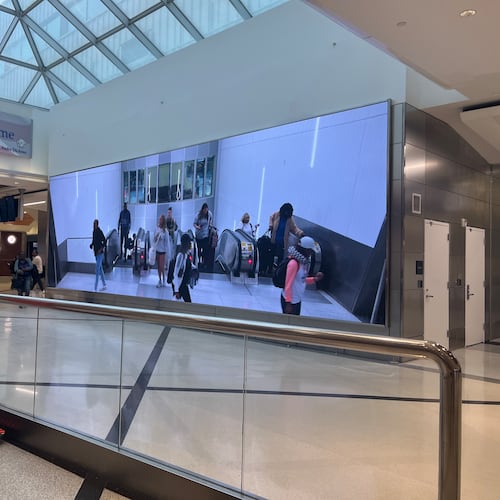Some travelers have begun flying again, but in the pandemic era they’re more likely to have to take a connecting flight to get to destinations.
That’s because as airlines gradually add back flights that were cut during the pandemic, they are concentrating on operating flights to their hubs and connecting passengers through those hubs instead of operating point-to-point nonstop flights between other cities.
As a condition of accepting federal CARES Act funding, airlines were required to continue operating flights to cities they previously served. But air travel is still down about 70%.
“What the airlines did is they said, okay, we’re going to retain service to all these cities but we’re going to start off by connecting them to their nearest hub,” said Brett Snyder, a former airline manager and author of a blog at crankyflier.com. “A lot of the point-to-point markets, those are going to be some of the last ones to end up getting service restored.”
Over the past couple of months, Delta Air Lines added back hundreds of flights to its schedule, but it is focusing on flights through its hubs in Atlanta, Detroit, Minneapolis and Salt Lake City.
The hub focus makes Atlanta “one of the major places of recovery for Delta,” Hartsfield-Jackson general manager John Selden has said.
Delta’s multi-hub system also means there are some routes previously served by nonstop flights that may now require connecting through a hub like Salt Lake City, particularly for cross-country flights to smaller cities.
In some cases, passengers may need to go through two stopovers to get to a destination.
Since Atlanta has for years been the world’s largest airline hub, those who live in Georgia are accustomed to having many nonstop flights to cities around the country and the world.
Delta still has plenty of flights from its Atlanta hub to cities across the Southeast, and has added flights at its other hubs and major operations in New York, Boston, Los Angeles and Seattle. But there may be fewer nonstops to other far-flung cities.
“It’s just something people will have to get used to until there are more people traveling again,” Snyder said. “The impact will lessen over time. It’s already better than it was in May.”
He said the longest lasting impact may be on international travel, with airlines operating flights to only select global hubs and connecting passengers through there to other destinations around the world. For Delta service to Europe, that means connecting passengers through partner carrier hubs in Paris and Amsterdam, for example.
The type of travelers airlines are focusing on is also shifting.
Delta and its major legacy competitors American and United have depended on corporate travel for their biggest source of profits. But business trips are expected to be slow to return.
Carriers are instead adding flights to leisure destinations, since vacationers are among the few people still traveling. United Airlines announced last week the addition of new nonstop routes to Florida from the Northeast and Midwest. Chicago-based United called it an approach “to add capacity where customers are telling us they want to go.”
Airlines may also pull out of some cities if requirements to serve them under the CARES Act end after Sept. 30 as scheduled. Airlines and labor unions have been pushing for an extension to the federal aid — and for the accompanying curbs on layoffs and service cuts.
Smaller markets could be at risk, Snyder said, particularly ones that are not vacation destinations and mostly benefited from business travel.
“The underlying reality is some of these markets don’t make sense,” he said. “There’s just not going to be enough demand.”
About the Author
The Latest
Featured


